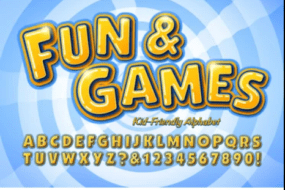
In a world that often demands productivity, seriousness, and responsibility, we tend to forget one essential ingredient for a joyful life—play. Whether it’s the carefree laughter of a child chasing bubbles, or the focused intensity of adults huddled around a board game, fun and games have the power to light us up from within. Yet, too often, we confine play to childhood and overlook its value as we age.
This article dives deep into the magic of reconnecting with your inner child, the science-backed benefits of play, and practical ways to incorporate fun and games into your everyday life—no matter how old you are.
The Inner Child: Who Is It and Why Does It Matter?
The concept of the “inner child” refers to the part of our psyche that holds onto our childlike wonder, spontaneity, creativity, and emotion. It’s the part of us that laughs without inhibition, imagines without boundaries, and delights in the little things.
Unfortunately, life has a way of pushing that part of us into the background. We’re taught to be “grown-ups,” to be logical and responsible. While there’s nothing wrong with maturity, the suppression of our inner child often leads to increased stress, burnout, and even emotional disconnection.
By consciously allowing ourselves to play, we invite the inner child back into our lives—and with it comes joy, curiosity, and emotional healing.
The Science Behind Play
You might think of play as something frivolous, but modern psychology says otherwise. Researchers have found that play is vital for both mental and physical well-being. Here’s what the science says:
1. Stress Reduction
Engaging in fun activities triggers the release of endorphins—your brain’s feel-good chemicals. These natural mood boosters help reduce cortisol, the stress hormone, leading to lower anxiety and better overall mental health.
2. Improved Cognitive Function
Games—whether video games, puzzles, or strategy-based board games—stimulate the brain and improve problem-solving skills, memory retention, and cognitive flexibility.
3. Social Connection
Playing with others strengthens bonds, improves communication skills, and fosters empathy. From team sports to party games, these interactions help create a sense of belonging.
4. Creativity and Innovation
Play encourages lateral thinking and innovation. It allows us to test ideas in a low-stakes environment, which can lead to breakthroughs both personally and professionally.
Adults at Play: Why We Need It More Than Ever
As we grow older, the spaces and opportunities for play seem to diminish. Work, bills, family obligations—these responsibilities can make the idea of playing seem childish or unimportant. But here’s the twist: adults may need play even more than kids do.
Think about it. When was the last time you did something just for the sheer joy of it? No productivity goal, no monetary reward—just fun? If you’re struggling to recall, it might be time to reintroduce play into your life.
Play helps us:
- Recharge our emotional batteries
- Stay present and mindful
- Tap into joy in a chaotic world
- Build resilience and adaptability
Types of Play for Grown-Ups
There’s no one way to play. What lights up one person may not work for another—and that’s okay! The key is to find your unique “play style.” Here are some categories to inspire you:
1. Creative Play
Drawing, painting, building with LEGO bricks, writing stories, or playing a musical instrument all fall under creative play. The point isn’t to be good—it’s to let your imagination flow freely.
2. Physical Play
Dancing in your living room, jumping on a trampoline, riding a bike, or joining a local sports league can reignite the physical joy of movement and help reconnect you with your body.
3. Game-Based Play
From classic board games like Monopoly or Scrabble to modern hits like Codenames or Catan, games offer structured play that brings people together. Video games also count—yes, even if you’re over 40.
4. Social Play
Improv classes, karaoke nights, themed parties, or even a night out playing laser tag with friends—these are ways to engage with others playfully and without the weight of “adulting.”
5. Mindful Play
Activities like gardening, hiking, or even playing with pets can be deeply playful and meditative at the same time. These slower, more sensory forms of play nourish the soul.
Nostalgia & Play: The Power of Childhood Memories
One of the most beautiful aspects of unleashing your inner child is the journey back to nostalgic memories. Revisiting toys, games, and activities from your youth can trigger powerful emotions—joy, comfort, and even healing.
Try this: make a list of five things you loved as a child. It could be flying a kite, playing make-believe, racing toy cars, or making mud pies. Pick one and try it again as an adult. You might be surprised at how profound the experience is.
Even rewatching childhood cartoons, collecting retro items, or building model kits can offer a sweet reconnection to your past self—one that felt free, imaginative, and unburdened.
Real-Life Stories: Adults Who Rediscovered Play
To show just how transformative play can be, here are a few quick stories from real people:
Alex, 42 – The Gamer Dad
“I used to think video games were a waste of time once I became a parent. But my son begged me to try Minecraft with him. Now we build worlds together every weekend. It’s become our bonding time, and I look forward to it as much as he does.”
Lila, 36 – The LEGO Lover
“I found a LEGO set in a thrift store one day and thought, ‘Why not?’ I spent the entire weekend building, and it was like a switch flipped in me. I remembered what it felt like to just do something for fun. Now I build a new set every month.”
Jerome, 59 – The Improv Star
“I joined a local improv class on a dare. At first, I was terrified. But I hadn’t laughed that hard in years. I made new friends, learned to be silly again, and even gained confidence in public speaking. Who knew play could change your whole vibe?”
The Link Between Play and Emotional Healing
For some, play isn’t just about fun—it’s also a form of therapy. Psychologists have long used play as a tool in trauma recovery. When we give ourselves permission to be silly, curious, and open, we break down the emotional walls that adulthood often builds up.
By engaging in play:
- We allow suppressed emotions to surface in a safe way
- We reclaim a sense of agency and imagination
- We rewire negative associations with joy or vulnerability
- We learn to trust ourselves again
Play can become a bridge to self-compassion and healing, especially when combined with practices like journaling, movement, and inner child work.
Making Space for Play in Your Life
If you’re convinced that play belongs in your adult life (and we hope you are!), here are some easy ways to get started:
1. Schedule It In
Set aside 15–30 minutes a few times a week to do something purely for fun. Treat it like a meeting—you wouldn’t cancel a work meeting, so don’t cancel playtime.
2. Join a Group
Look for local meetups or classes around art, improv, board games, or dance. Being around others who prioritize play can inspire you to do the same.
3. Play With Kids
If you have children, nieces, nephews, or young neighbors, let them take the lead. Kids are masters at play. Get on the floor, put on a costume, build a pillow fort—see the world through their eyes.
4. Unplug & Reimagine
Put the phone down and explore your surroundings like it’s your first time there. Create a scavenger hunt for yourself. Try “urban adventuring.” Even everyday environments can become magical with the right mindset.
5. Say Yes More Often
Say yes to spontaneous invitations. Say yes to karaoke, mini golf, trampoline parks, or goofy dance parties in your living room. Joy often lives just outside your comfort zone.
Final Thoughts: Life Is Too Short Not to Play
If you take one thing away from this, let it be this: play is not a luxury. It’s a necessity. It brings balance to the seriousness of adult life. It fosters connection, laughter, and healing. It reminds us that underneath the layers of bills, deadlines, and expectations, we’re still the same curious, joyful beings we were as children.
So go ahead—dust off that board game, take that dance class, build that LEGO castle, or laugh until your stomach hurts. Reclaim your joy. Unleash your inner child. Life is too short not to play.
Bonus: 10 Quick Play Prompts for Adults
- Color in a kids’ coloring book—with crayons.
- Build a blanket fort and read inside it.
- Invent a game with silly rules and challenge a friend.
- Learn a TikTok dance, just for fun.
- Create a mini scavenger hunt around your neighborhood.
- Blow bubbles in the park.
- Host a theme party (pirates, ‘90s, etc.).
- Write a short story or comic strip.
- Make your own board game or card game.
- Jump into a puddle next time it rains.
You don’t have to be young to feel young. You just have to give yourself permission.
Let me know if you’d like to turn this into a downloadable PDF, break it into a blog series, or create visuals to go with it!






















